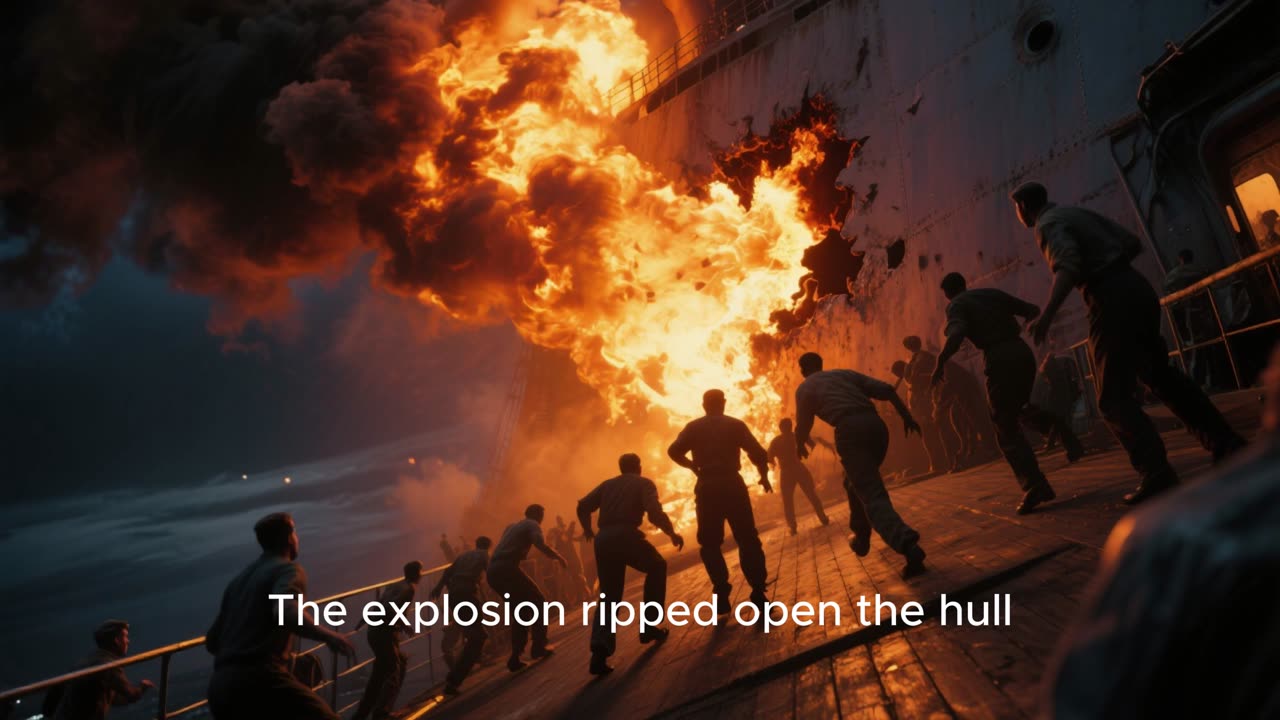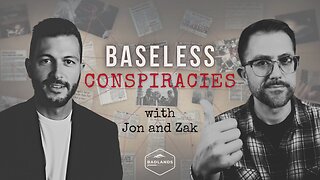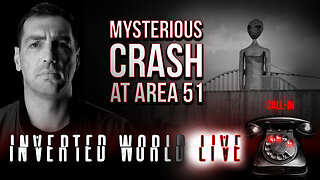Premium Only Content

The Endless Sea
The Shipwreck of the USS Indianapolis
The ocean is a world without mercy. Beneath its calm blue surface lies a kingdom of silence, vast and indifferent, where ships vanish and men are reduced to whispers carried by the current. It was in this boundless, unforgiving place that one of the most horrifying stories of survival ever recorded unfolded — the story of the USS Indianapolis, a proud American warship that disappeared into the dark in the final days of World War II, leaving her crew adrift in the open sea for days, surrounded by hunger, thirst, and sharks.
It was July 1945, and the war in the Pacific was nearing its end. The USS Indianapolis, a heavy cruiser of the United States Navy, had been chosen for a top-secret mission. Her orders were delivered in silence, known only to a handful of men on board. Even the crew didn’t know the truth — that the ship carried the most powerful weapon mankind had ever built. In her hull lay components of the atomic bomb that would soon fall on Hiroshima. The mission was so secret that the Indianapolis sailed alone, without escort, through waters still crawling with enemy submarines.
She completed her delivery on July 26 and turned west toward the Philippines. The men were in good spirits, relieved to be heading home. The Pacific stretched endlessly around them, silver under the sun, peaceful in its deceit. Captain Charles B. McVay III stood on the bridge, unaware that his ship was sailing straight into the jaws of fate.
Just after midnight on July 30, while most of the crew slept, a Japanese submarine, I-58, prowled the dark sea ahead. Its captain, Mochitsura Hashimoto, spotted the silhouette of the Indianapolis against the starlit horizon. He gave the order. A trail of bubbles cut through the black water, followed by a thunder that shattered the night. Two torpedoes slammed into the ship — one near the bow, another near the middle. The explosion ripped open the hull, ignited fuel, and sent flames roaring through the decks. Within twelve minutes, the proud cruiser was gone, swallowed by the sea.
Nine hundred sailors went into the water. Only a few lifeboats were launched; most clung to floating debris, oil slicks, and each other. The night was chaos — men screaming, the ship breaking apart, the sky on fire. Then the flames faded, and all that remained was darkness, the sound of waves, and the vast emptiness of the Pacific.
They thought rescue would come by morning. But no one knew the Indianapolis was missing. Her distress call had never been received. For four long days, the survivors drifted under the burning sun, with no food, no water, and no hope. The ocean turned from blue to black to red as men began to die — from thirst, exposure, wounds, and something worse.
The sharks came with the dawn. They appeared first as shadows, then as fins cutting the surface. The scent of blood drew them in, hundreds of them, circling, waiting. They struck without warning, dragging men under as the others screamed helplessly. Some prayed, others lost their minds. The strong tried to keep the weak alive, but the sea was stronger. The survivors huddled in small groups, too afraid to fall asleep. At night, they could hear the water moving, the faint slap of tails, the sound of teeth tearing flesh somewhere in the dark.
By the third day, the sun had become their second enemy. The heat was unbearable. Lips cracked, skin blistered, salt burned into wounds. Some men drank seawater in desperation, and it drove them mad. They shouted, laughed, swam toward imaginary islands, and vanished beneath the waves. The officers tried to keep order, but the sea has no rules. Time blurred. Morning and night lost meaning. Every hour was survival.
Then, on August 2, as the fourth day began, fate intervened. A Navy patrol plane flying over the area spotted an oil slick and then — impossibly — the tiny figures of men floating in the vast ocean. The pilot radioed for help, and soon rescue planes and ships converged on the scene. When the first rescuers reached the survivors, they were horrified. Hundreds of men floated half-dead, their eyes sunken, their bodies burned and swollen, whispering for water. Many wept when they saw the rescuers, unable to believe they were real.
Of the 1,196 men aboard the Indianapolis, only 316 survived. The rest had perished in the sea — victims of the explosion, dehydration, exposure, and the endless assault of sharks. It was the worst naval disaster in U.S. history. The survivors were hailed as heroes, but the shadow of the tragedy fell on their captain, Charles McVay, who was court-martialed for failing to zigzag his ship — a maneuver meant to evade submarines. The accusation broke him. Years later, tormented by guilt, McVay took his own life. Decades after his death, he was officially exonerated, but the weight of the sea never truly lifted.
The story of the Indianapolis is more than a tale of war. It is a portrait of endurance, of men stripped of everything but the will to live. In those endless days adrift, the ocean tested the limits of the human spirit and found that even when surrounded by darkness and death, the smallest spark of hope can still burn. Some survivors said later that what saved them was not strength or luck, but the memory of a voice, a face, a promise that someone was waiting for them beyond the horizon.
The sea took most of them, but it could not erase their story. To this day, the name Indianapolis carries the echo of those lost voices — men who faced the deepest fear and refused to surrender.
-
 2:07:06
2:07:06
Side Scrollers Podcast
21 hours agoHasan Piker CAUGHT LYING AGAIN + Twitch URGES LEFTIST IDEOLOGY + More | Side Scrollers
66.4K10 -
 8:40
8:40
MattMorseTV
17 hours ago $10.71 earnedSchumer just KICKED OFF the Left-Wing CIVIL WAR.
25K31 -
 21:39
21:39
Nikko Ortiz
2 days agoI Take A North Korean Shooting
27K6 -
 1:46:26
1:46:26
The Michelle Moore Show
20 hours ago'The Religion Invasion In the U.S. and the Deep State Agenda' Guest, Mark Taylor: The Michelle Moore Show (Nov 3, 2025)
35.8K39 -
 LIVE
LIVE
TruthStream with Joe and Scott
5 days agoSovereign Codes & Cosmic Infrastructure,Ufo's, UAP's, Monads, Matrix Satellites, Interstellar Visitors, SYRONA #505
385 watching -
 LIVE
LIVE
Lofi Girl
2 years agoSynthwave Radio 🌌 - beats to chill/game to
143 watching -
 5:55:11
5:55:11
MattMorseTV
13 hours ago $100.53 earned🔴Trump's '60 Minutes' INTERVIEW + MUCH MORE.🔴
163K51 -
 2:02:36
2:02:36
Badlands Media
18 hours agoBaseless Conspiracies Ep. 157: Jack the Ripper, the Crash & the Great Disclosure Countdown
41K24 -
 2:06:09
2:06:09
Inverted World Live
14 hours agoMysterious Crash at Area 51 | Ep. 134
44.2K20 -
 2:48:59
2:48:59
TimcastIRL
12 hours agoTrump Endorses Cuomo, Says NO COMMIE MAMDANI, Obama REFUSES To Endorse Mamdani | Timcast IRL
289K260